Abstract
The highly unsaturated n-3 fatty acids from fish oils, eicosapentaenoic acid [EPA; C20:5 (n-3)] and docosahexanoic acid [DHA; C22:6 (n-3)], prevent the toxicity of high concentrations of the cardiac glycoside ouabain to isolated neonatal rat cardiac myocytes. Arachidonic acid [C20:4 (n-6)] lacks such protective action. The protective effect of the n-3 fatty acids is associated with their ability to prevent high levels of cytosolic free calcium from occurring in response to the ouabain. This in turn results, at least in part, from a 30% reduction in calcium influx rate induced by the n-3 fatty acids. This protective effect is simulated by nitrendipine, a dihydropyridine inhibitor of the L-type calcium channels in cardiac myocytes. Nitrendipine (0.1 mM) alone, however, inhibits myocyte contractility, as do verapamil (10 microM) and diltiazem (1.0 microM). EPA or DHA (5 microM) blocks the inhibitory effects of nitrendipine but not those of verapamil or diltiazem. Bay K8644, a known dihydropyridine agonist of L-type calcium channels, produces a ouabain-like effect that is also prevented by EPA or DHA. Specific binding of [3H]nitrendipine to intact myocytes is noncompetitively inhibited by EPA or DHA in a manner that reduces the number of high- and low-affinity binding sites (Bmax) and increases their affinities. The fish oil fatty acids prevent calcium overload from ouabain and Bay K8644. They also prevent a calcium-depleted state in the myocytes caused by the L-type calcium channel blocker nitrendipine. The protective effects of the n-3 fatty acids appear to result from their modulatory effects on nitrendipine-sensitive L-type calcium channels.
Full text
PDF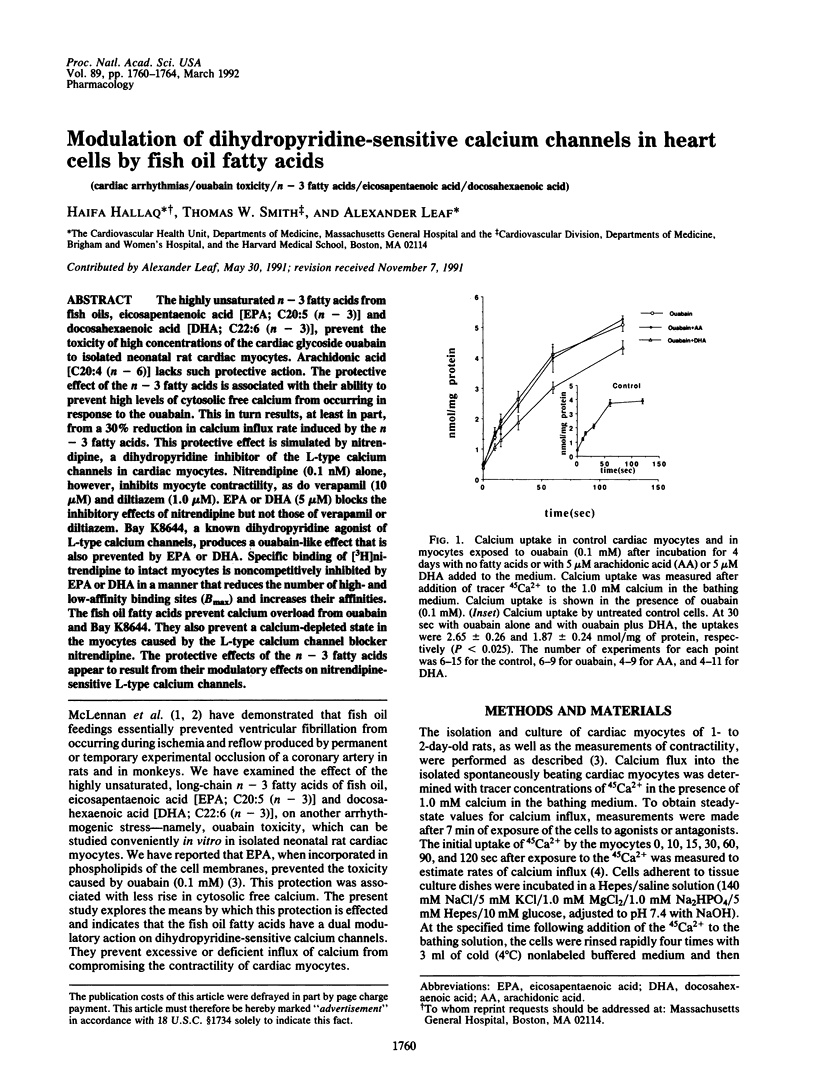
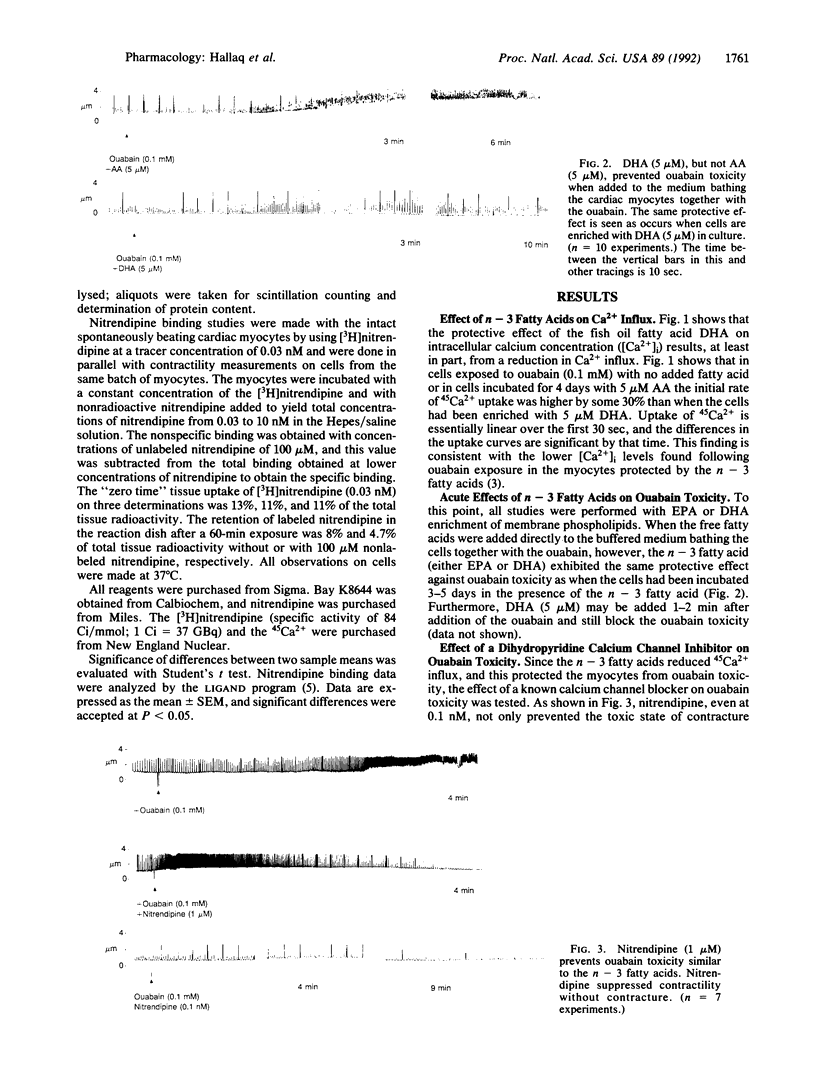
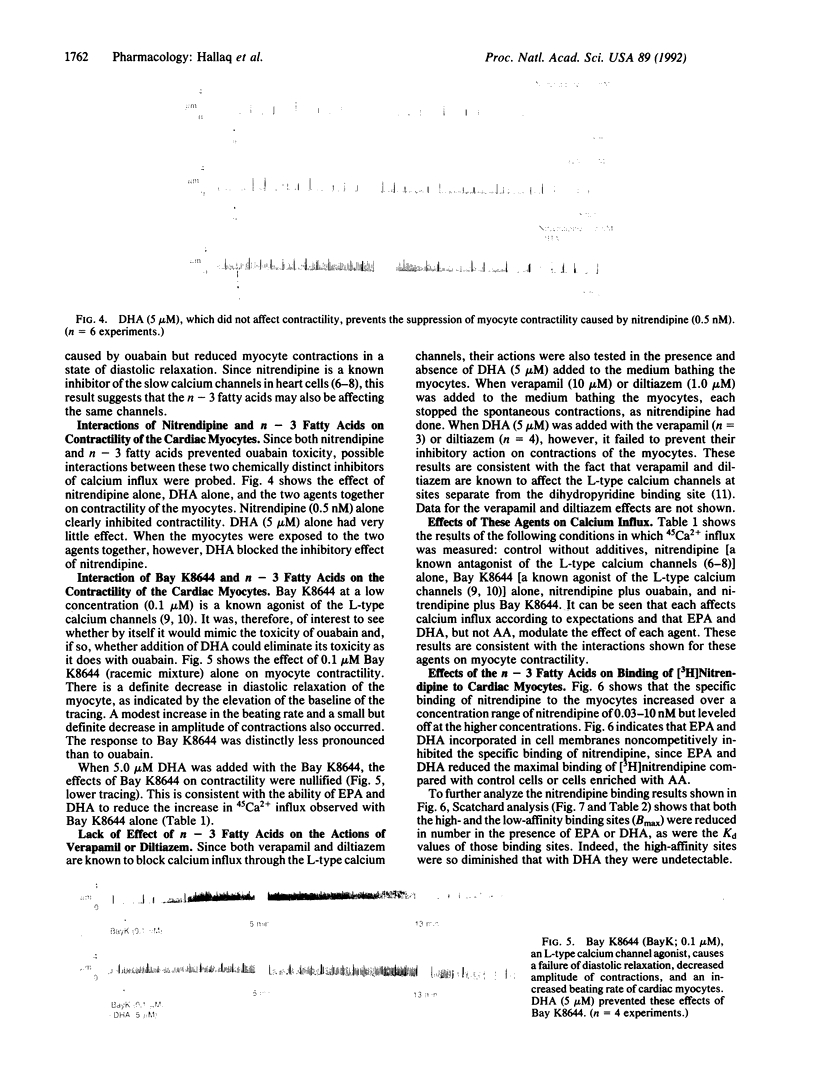
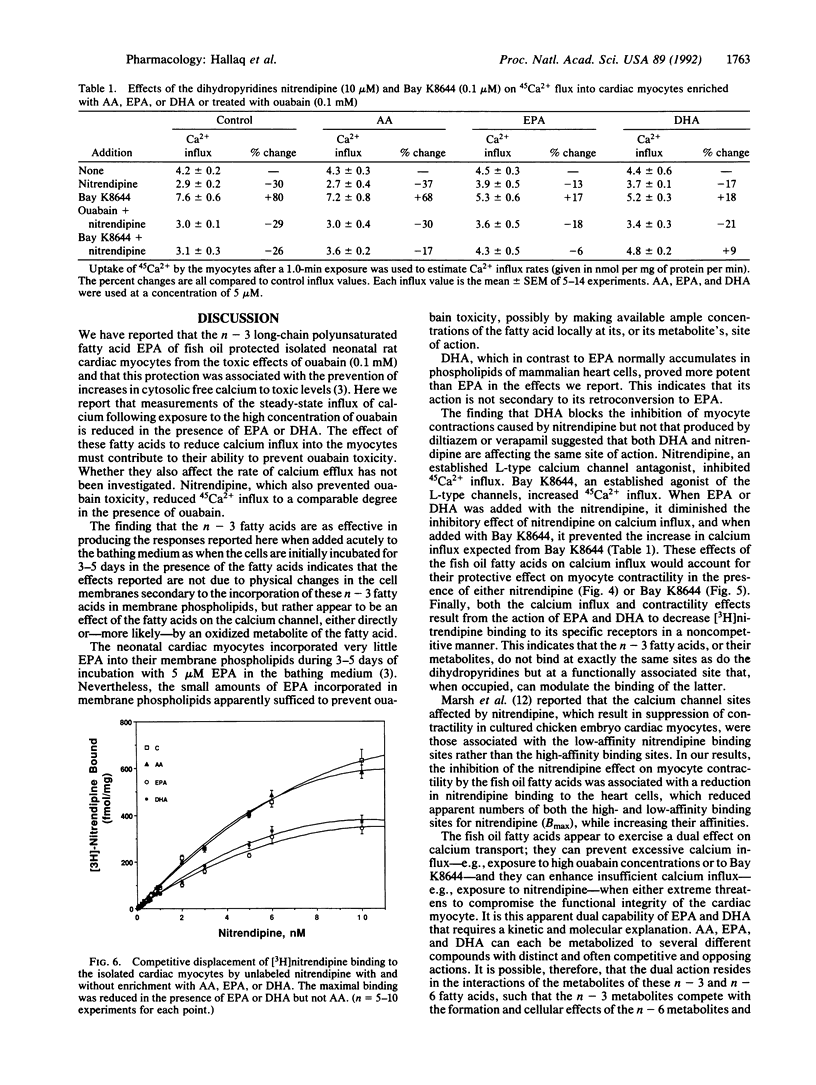
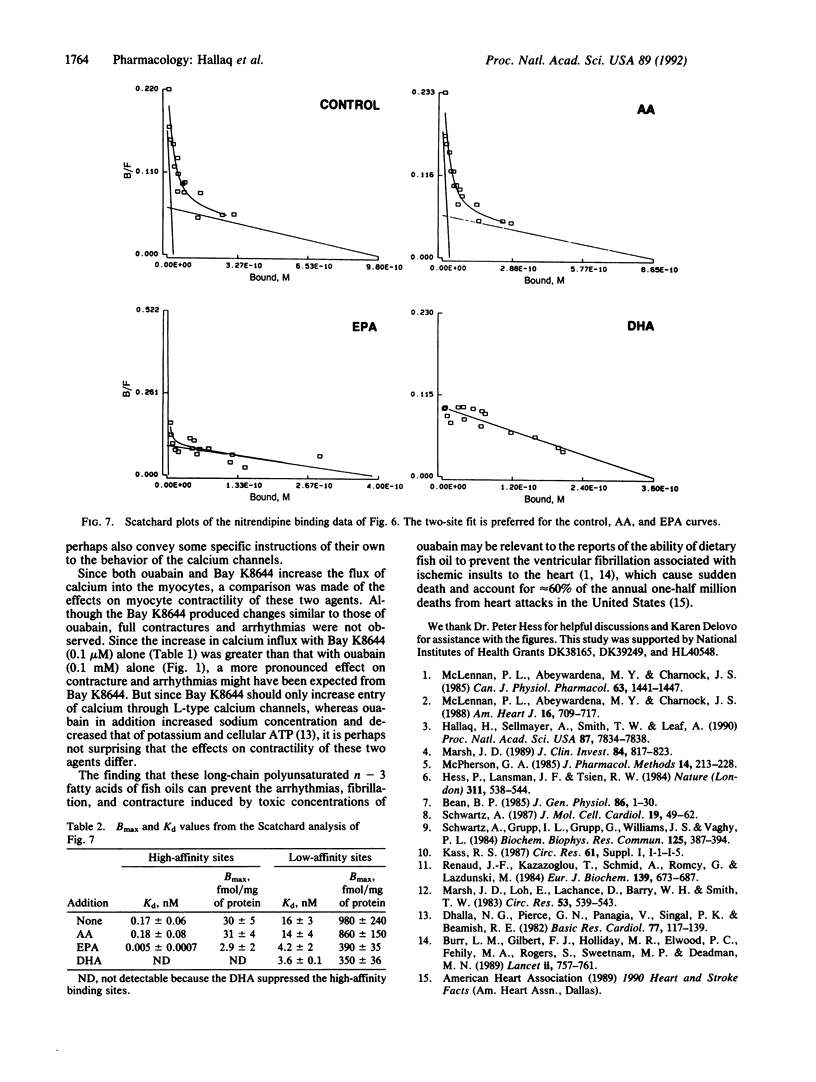
Images in this article
Selected References
These references are in PubMed. This may not be the complete list of references from this article.
- Bean B. P. Two kinds of calcium channels in canine atrial cells. Differences in kinetics, selectivity, and pharmacology. J Gen Physiol. 1985 Jul;86(1):1–30. doi: 10.1085/jgp.86.1.1. [DOI] [PMC free article] [PubMed] [Google Scholar]
- Burr M. L., Fehily A. M., Gilbert J. F., Rogers S., Holliday R. M., Sweetnam P. M., Elwood P. C., Deadman N. M. Effects of changes in fat, fish, and fibre intakes on death and myocardial reinfarction: diet and reinfarction trial (DART). Lancet. 1989 Sep 30;2(8666):757–761. doi: 10.1016/s0140-6736(89)90828-3. [DOI] [PubMed] [Google Scholar]
- Dhalla N. S., Pierce G. N., Panagia V., Singal P. K., Beamish R. E. Calcium movements in relation to heart function. Basic Res Cardiol. 1982 Mar-Apr;77(2):117–139. doi: 10.1007/BF01908167. [DOI] [PubMed] [Google Scholar]
- Hallaq H., Sellmayer A., Smith T. W., Leaf A. Protective effect of eicosapentaenoic acid on ouabain toxicity in neonatal rat cardiac myocytes. Proc Natl Acad Sci U S A. 1990 Oct;87(20):7834–7838. doi: 10.1073/pnas.87.20.7834. [DOI] [PMC free article] [PubMed] [Google Scholar]
- Hess P., Lansman J. B., Tsien R. W. Different modes of Ca channel gating behaviour favoured by dihydropyridine Ca agonists and antagonists. Nature. 1984 Oct 11;311(5986):538–544. doi: 10.1038/311538a0. [DOI] [PubMed] [Google Scholar]
- Marsh J. D. Coregulation of calcium channels and beta-adrenergic receptors in cultured chick embryo ventricular cells. J Clin Invest. 1989 Sep;84(3):817–823. doi: 10.1172/JCI114241. [DOI] [PMC free article] [PubMed] [Google Scholar]
- Marsh J. D., Loh E., Lachance D., Barry W. H., Smith T. W. Relationship of binding of a calcium channel blocker to inhibition of contraction in intact cultured embryonic chick ventricular cells. Circ Res. 1983 Oct;53(4):539–543. doi: 10.1161/01.res.53.4.539. [DOI] [PubMed] [Google Scholar]
- McLennan P. L., Abeywardena M. Y., Charnock J. S. Dietary fish oil prevents ventricular fibrillation following coronary artery occlusion and reperfusion. Am Heart J. 1988 Sep;116(3):709–717. doi: 10.1016/0002-8703(88)90328-6. [DOI] [PubMed] [Google Scholar]
- McPherson G. A. Analysis of radioligand binding experiments. A collection of computer programs for the IBM PC. J Pharmacol Methods. 1985 Nov;14(3):213–228. doi: 10.1016/0160-5402(85)90034-8. [DOI] [PubMed] [Google Scholar]
- Renaud J. F., Kazazoglou T., Schmid A., Romey G., Lazdunski M. Differentiation of receptor sites for [3H]nitrendipine in chick hearts and physiological relation to the slow Ca2+ channel and to excitation-contraction coupling. Eur J Biochem. 1984 Mar 15;139(3):673–681. doi: 10.1111/j.1432-1033.1984.tb08056.x. [DOI] [PubMed] [Google Scholar]
- Schwartz A., Grupp I. L., Grupp G., Williams J. S., Vaghy P. L. Effects of dihydropyridine calcium channel modulators in the heart: pharmacological and radioligand binding correlations. Biochem Biophys Res Commun. 1984 Nov 30;125(1):387–394. doi: 10.1016/s0006-291x(84)80380-0. [DOI] [PubMed] [Google Scholar]
- Schwartz A. Studies on mechanisms of calcium channel modulators. J Mol Cell Cardiol. 1987 May;19 (Suppl 2):49–62. doi: 10.1016/s0022-2828(87)80004-4. [DOI] [PubMed] [Google Scholar]










